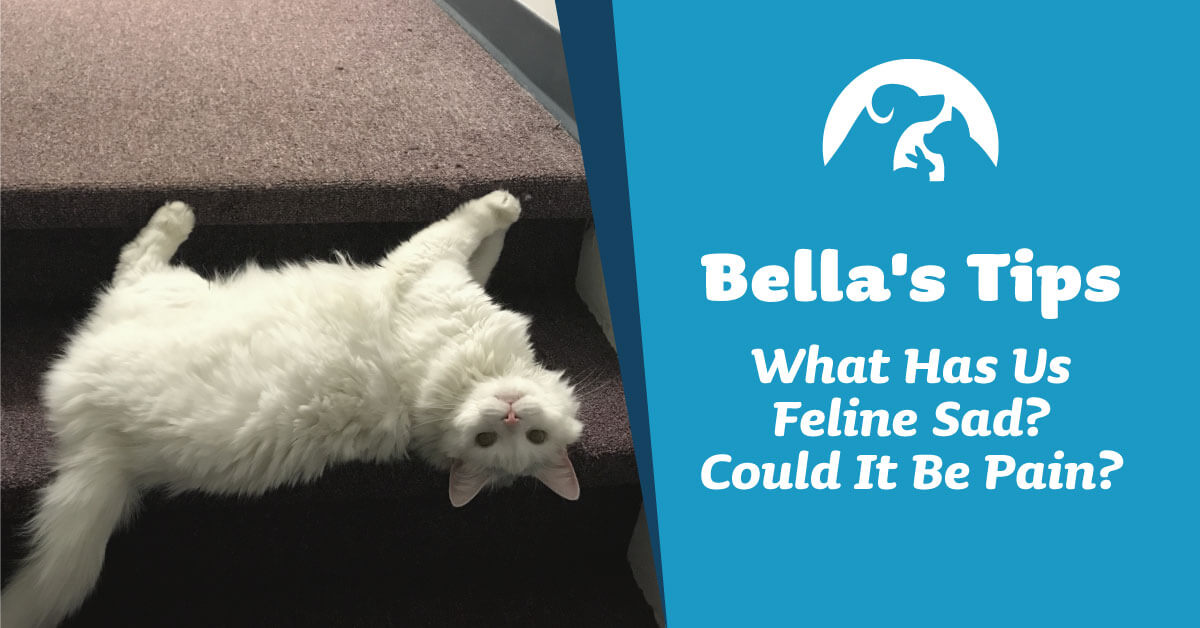It’s Bella, your favorite glamourpuss! Today, I want to discuss pain in cats and dogs, as well as how you can spot the symptoms!
When caring for us furry friends, it’s important to stay PAW-sitive… but there are times where you need to be on high alert for symptoms of pain. Since you don’t have an animal-to-human dictionary (though we absolutely wish you did!), it can be hard to figure out what is going on with us.
Cats and dogs rarely vocalize when in chronic pain, unlike how we might share discomfort when experiencing acute pain.
How To Spot Acute Pain In Cats:
Although we are superior to dogs, us cats still have the unFURtunate experience of sometimes getting hurt. If your feline friend is showing any of the following symptoms, call the vet!
- Reduced activity
- Loss of appetite
- Quietness
- Hiding
- Hissing and growling (vocalization)
- Excessive licking of a specific area of the body (usually involving surgical wounds)
- Guarding behavior
- Cessation of grooming
- Tail flicking and aggression.
Cats in severe pain are usually depressed (you would be too), and we can sometimes get very quiet and immobile.
Symptoms of Acute Pain in Dogs
Acute pain occurs commonly in dogs as a result of trauma, surgery, medical problems, infections or inflammatory disease. Although I think dogs are absolutely claw-ful, I suppose you may want to know how to spot something causing them pain.
Behavioral signs of pain in dogs include:
- Change in posture or body position
- Change in demeanor
- Vocalization (i.e. being very loud and talkative)
- An unusual reaction to touch
- Strange interactions with people (e.g., reduced interaction, aggression)
- Altered mobility (e.g., lameness, reluctance to move)
- Reduction in appetite
The Chronic Pain Cat–astrophe
Older pets often showcase symptoms of chronic pain, which is often misdiagnosed as normal aging. It’s important to understand the difference between normal aging and the symptoms of disease or arthritis because by the time us furry friends show symptoms, we have probably been feeling discomfort for a while.
Watch your older pet for these signs:
- limping
- stiffness
- decreased activity
- lagging behind on walks
- difficulty standing up after rest
- avoidance of stairs
- hesitation to jump up (especially in cats)
- arched back, head lowered or tilted
- neck pain
- biting or licking at a leg or joint
- thinning legs
- irritability
Don’t worry- there are plenty of ways to help with chronic pain, like weight loss, medications, rehabilitation exercises, supplements, play, and alternative treatments such as laser therapy and acupuncture. Dr. Osborne tells me that although it’s PAWful, there are several ways that the doctor can help manage pain.
The first step in helping your pet, is to take your furry friend into the office for a check-up. Ready to schedule a time? Call the humans at (865) 435-1374, and our doctors can help find purr-fect treatment for your pet!
Ciao & Meow –
Bella
